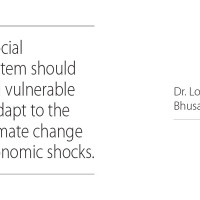- Thursday, 18 April 2024
Notable Fall In HIV Rates
Ambar Castillo
The latest accounting of HIV incidence in the United States is a mixed bag. Overall estimated new infections dropped 12 per cent in 2021 compared to 2017, according to data released recently by the Centres for Disease Control and Prevention. But the American South — which has had a long time HIV problem compared with other areas across the U.S. — was the only region to show a “statistically significant decline.”
And while young gay and bisexual men drove the decline among 13- to 24-year-olds, the drop was uneven across race and gender, reflecting familiar disparities among Black and Latino boys and men.
Annual HIV infections dropped from 9,300 in 2017 to 6,100 in 2021 among 13- to 24-year-old boys and men. For white males in this age group, the decline from 2017 estimates was 45 per cent, compared with 36 per cent for Hispanic or Latino and 27 per cent for Black males.
Experts called the CDC findings “disappointing,” though not surprising. They ticked off persistent disparities in the new data: Black and Latino men who have sex with men tend to take pre-exposure prophylaxis (PrEP) less than their peers and are less likely to be on treatment if they are HIV positive. While Black and Latino people account for the highest rates of new infection and could most benefit from PrEP if prescribed, they were prescribed it at much lower rates than white people in 2021.
Monica Gandhi, medical director of the “Ward 86” HIV Clinic at San Francisco General Hospital, attributes much of these disparities to disproportionate gaps in access to health care and HIV treatment. The pandemic laid bare the higher numbers of uninsured or underinsured people who belong to racial and ethnic marginalised communities.
Then there’s the stigma that’s particularly pervasive in certain communities.
“In general, Black and Latino men [who have sex with men], especially young gay men, may have a harder time coming out to their families [that may hold] more traditional or conservative values,” Gandhi said. “And because of that, anything that’s done without disclosure, in a more clandestine manner, is more difficult to access or take. If you’re not out a gay as a 16-year-old in your household, you might not want to bring your PrEP pills home. So I think a lot of that is stigma.”
Stigma and access issues are also prevalent in the U.S. South, which continues to struggle with the highest rates of HIV infection. Fifty-two percent of U.S. HIV cases are in the region, a proportion that hasn’t moved a single percentage point from the 2017 CDC data. Medicaid expansion is a big factor: Most states declining this federal funding are in the South and studies show comprehensive health coverage is critical to HIV intervention access.
“This is not something we only see in HIV, we see it across infectious diseases (as COVID showed us so starkly) and non-communicable diseases,” said Matthew Fox, professor of epidemiology and global health at Boston University.
CDC officials conceded that, while major gaps persist, at least some improvement in PrEP coverage was seen across all races and ethnicities. They said they hope to close gaps in part by answering community leaders’ calls for better PrEP campaigns.
The U.S. has set a nationwide goal to reduce new HIV infections by 90 per cent by 2030. CDC officials acknowledged that current data show the U.S. is not on track to meet it.
Jessica Justman, an infectious disease specialist with ICAP at Columbia University, pointed out that, despite the resources that could be accessible in a wealthy nation like the U.S., some of the national numbers around HIV are just as dismal, or “not that much better” than African countries she has surveyed. For instance, the new CDC data reports that 87 per cent of people living with HIV in the U.S. were unaware of their diagnosis, as compared to the 80 per cent in Kenya, according to household surveys conducted under the Population-based HIV Impact Assessment (PHIA) Project.
Big problems remain when it comes to racial, ethnic, and geographic disparities and what Gandhi called “the nagging concerns about methodology.” Experts raised concerns that the new data might not reflect an HIV testing environment that is back to pre-pandemic standards.
Experts also acknowledged the good news mixed in with the disappointments: For one, transmission of HIV from mother to child has continued to decline.
A decline in the rate of new infections in the U.S. South is “something that would give me hope, because that’s the part of the country that has the most room for improvement,” said Justman. And the decline among 13-to-24-year-olds is promising.
“It’s good news that we’re having reductions in such a critical age group in the United States,” said Gandhi, adding that “youth in the 13-24 age group getting HIV is difficult.… They will have to be on HIV medications for the rest of their lives.”
-- statnews.com















